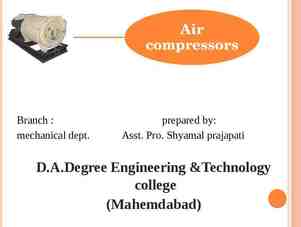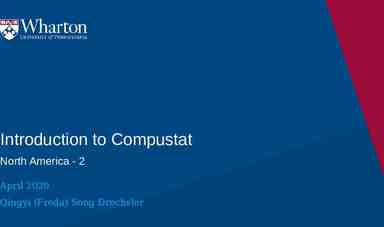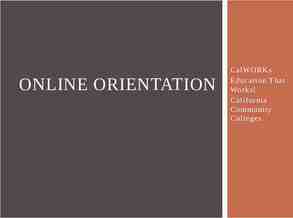Basics of Ayurveda Dr. Sajitha K, Professor & H O D, Dept of
41 Slides317.50 KB
Basics of Ayurveda Dr. Sajitha K, Professor & H O D, Dept of Swasthavritta, Sri Sri College of Ayurvedic Sciences, Kanakapura road. Udayapura post, Bengaluru -560082. [email protected]
Antiquity - How old is the system? It existed right from the beginning of life. Brahma smritva – Memorized . Vedas - 5000 years BC (Spiritual Scriptures) Adharvana veda - Ayurveda – Upaveda A systematized knowledge of Ayurveda started 1000 years before Christ (B.C) 2
What is Ayurveda? Ayurveda - Ayu Veda (Life Knowledge) It is an art and science of healing. It literally means “To know about life” 3
How it is defined? It is defined as “one which look after the welfare of all human beings in particular” and in general “with regard to their physical mental socio cultural and spiritual well being” 4
What it is not? Not merely a herbal medicine or Folk medicine Belief system or or Alternate medicine 5
What is its scope? The scope is far and wide The major divisions of Ayurveda depicts this It encompasses Humans, Animals and plants as stated here under Ayurveda - Humans Gavayurveda - Animals like cows, horses, elephants etc Vrikshayurveda - Related to health of plants 6
What are its specialized branches Kaya chikitsa Bala chikitsa Graha chikitsa (Invisibles)? Urdhvanga chikitsa Ophthalmology Shalya chikitsa Damshtra chikitsa Jara chikitsa Vrisha chikitsa - General medicine - Pediatrics - Demonology - ENT and - Surgery - Toxicology - Geriatrics - Aphrodisiac 7
What are its Aims? Promotion of Health and prevention of diseases (By adopting preventive life style from childhood, which include daily regimen, seasonal regimen, food habits, body purificatory procedures) Curing of ailments (By taking medicines, diet and other activities influencing restoration of health) 8
What is its basic approach? It is holistic and not merely physical Is Ayurveda based on any literature? Yes - the chief sources are as follows Charaka samhita Kashyapa samhita Susrutha samhita Madhava nidana Asthtanga Sangraha Sarangadhara samhita and many other texts 9
What is life Shareera (Body) Indriya (Sensory organs) Sattva (Mind) Atma (Soul) - Samyoga (combination) is ‘jeevitam’ (life) 10
What is the benefit through Ayurveda Deerghaayu (Longevity of life) Why longevity is needed ? - Chaturvidha purushartha sadhaka Dharma - Practicing of Sacred rituals Artha - Earning of livelihood Kaama - Continuing progeny Moksha - Ultimate salvation 11
Important factors in the body Doshas (Humors) -3 Vata, Pitta, Kapha Dhatus (Tissues?) -7 Rasa, Rakta, Mamsa, Meda, Asthi, Majja, Sukra Malas (Morbid materials) -3 Purisha, Mutra, Sweda 12
Ayurvedic theory of health is based on Tridosha (primary life forces or biological humors), saptadhatu ( Seven basic tissues) trimalas (Three basic biological wastes) and Panchamahabhuta (five basic elements) dynamic balance of tridoshas, saptha dhatus and trimalas creates health 13
Ayurveda has a holistic approach to health by integrating the mind, body and soul Combination of these factors inherited at birth determine an individual's Prakriti (constitution) Swastha. 14
Relation between Shareera and Manasika dosha (Humors) and Mahabhootha (Basic elements) Vata Vayu Pitta Kapha Rajo guna Akasha, Sattva guna Tamo guna Agni Apa, Prithvi 15
Basic tastes in the universe and composition Madhura (Sweet) Amla (Sour) Lavana (Salty) Tikta (Bitter) Katu (Pungent) Kashaya (Astringent) Prithwi Apa Prithvi Teja Jala Teja Vayu Akasha Teja Vayu Prithvi vayu 16
Relation between Doshas and Rasa Madhura, Amla, Lavana Pacifies vata Tikta, Katu, Kashaya Pacifies Kapha Kashaya, Tikta, Madhura Pacifies Pitta 17
Ritu (Seasons) Sisira (Autumn) Vasantha (Spring) Greeshma (Summer) Varsha (Rainy) Sharad (Winter) Hemantha (Late winter) 18
Ritu (Seasons) and Dosha avastha (State of bodily humors) Dosha Avastha Chaya Prakopa (Accumulation) (Aggravation) Prashamana (Pacification) Vata Greeshma (Summer) Varsha (Rainy) Sharad (Winter) Pitta Varsha (Rainy) Sharad (Winter) Hemantha (Late winter) Kapha Sisira (Autumn) Vasantha (Spring) Greeshma (Summer) 19
What is the principle of treatment? The diseases occur due to dis-equilibrium of three bodily humors and two psychic qualities This situation has to be brought back to equilibrium status It can be achieved by removing the vitiated humors by way of purificatory (shodhana) measures, palliative (Shamana) measures, strengthening of immune system (Ojus) and avoiding the causative factors (Nidana) 20
Cause for Diseases Kala artha karmanam Hina mithya ati matraka Kala - Time (seasons) Ardha Karma - Sensory organs / Objects of senses - Deeds / Shodhana karma Heena (Deficient use) Mithya Ati (Improper use) leads to diseases (Excessive use) 21
Epidemics - Ayurvedic outlook Destruction of large scale population occur when following common factors are vitiated and affects villages Dushita Vayu Most potent factor Dushita Jala Dushita Desha Dushita kala 22
Roga prakara (Types of diseases) Shareera (Bodily) and Manasika (Psychic) Nija (due to bodily factors) Agantuja (External factors) Causes: Abhighata (injuries) Abhisanga (Infections) Abhichara (Improper deeds) Abhishapa (Curse of holy people) 23
Aushadhi (Medicines) Shamanam (Pacifying) Shodhanam (Eliminatory) Swastha hitakaram (Health promotive) Rasayana - Rejuvenation therapy Vajikarana - Aphrodisiac therapy 24
Rogi pariksha (Examination of patient) Darshana Sparshana Prashnana (Inspection) (Palpation) (Interrogation) Ashta sthana (Eight fold examination) Dashavidha (Ten fold examination) 25
Roga pariksha (Examination of disease) Pancha lakshana nidanam Nidana - Etiology Purva roopa - Premonitory symptoms Roopa - Signs & symptoms Upashaya - Compatible / Non compatible Samprapti - Pathogenesis 26
Stages of disease manifestation Sanchaya (Accumulation) Prakopa (Spreading) Sthana samsraya (Local lodgment) Vyaktavastha (Manifestation) Bheda (Complications) 27
Types of Rasayana (Rejuvenation) Naimittika - Disease specific Kamya - Specific objective Ajasrika - Daily usage 28
Shodhana - (Eliminatory treatments) Vamana Emesis Virechana Purgation Basti Medicated enema Nasya Nasal administration Raktamokshana Blood letting Also known as Panchakarma (Five fold treatment) 29
Types of medicine formulations Swarasa Juicy extractions Kalka Medicinal pastes Kwatham Decoctions Hima Cold infusions Phanta Hot infusions Churna, Vati, Varti, Anjana etc. 30
Unique contribution of Ayurveda Dina charya (Daily regimen) Ritu charya (Seasonal regimen) Dharaneeya adharaneeya vega (Suppressible / Non suppressible urges) Sadvritta / Achara rasayana (Ethics) Viruddha (Incompatibles) And many other 31
Ayurveda has differentiated organs in to Jnanendriya Karmendriya (organs of perception) (organs of action) Ubhayendriya (perception as well as action) - manas 32
Location of Manas ‘Hridaya’ is considered to be the seat of manas Sensory and motor functions of mind are attributed to brain, and psychological functions, emotional aspects are attributed to the heart 33
Functions of Manas Chintyam - Thinking Vicharam - Prolongation / expansion of thoughts Oohyam - Imagination Dhyeyam - Concentration Sankalpam - Planning Yatkinchit - All other perceivable 34
Qualities of Manas - Sattva - Rajas - Tamas (non-vitiated and stable) Disease causing 35
Types of treatment Daivavyapashraya Yuktivyapashraya Sattvavajaya (Psychotherapy) 36
Daivavyapashraya (Divine) Mantra - Chanting of Hymns Aushadha - Sacred Herbs Gems - Precious Stones Mangala karma - Auspicious offerings Homa - Holy rituals Niyama - Regulations Prayaschita - Atonement Upavasa - Fasting etc 37
Yukti vyapasraya (Prescriptions) Single Herbs (Medhya Drugs) Brahmi, Mandukaparni, Ashwagandha, Jatamamsi, Shankapushpi etc. Ghritas (Medicated Ghee) Panchgavya ghrita, Brahmi ghrita, kalyanaka ghrita etc. Herbomineral Preparations Brahmi vati, Smriti Sagar Rasa, Manasamitra vatakam etc. 38
Sattvavajaya Chikitsa (Psycho therapy) Jnana - Knowledge Vignana - Educating the Patient Dhairya Smriti - Moral support - Reviving the past memory Samadhi - Abstaining from Over Indulgence 39
Achara Rasayana Physical, Mental code of conduct Maintaining Proper personal and social harmony Sleep, Wholesome Diet Control over Senses (Cha.Chi 1/30) 40
Thank you . 41







